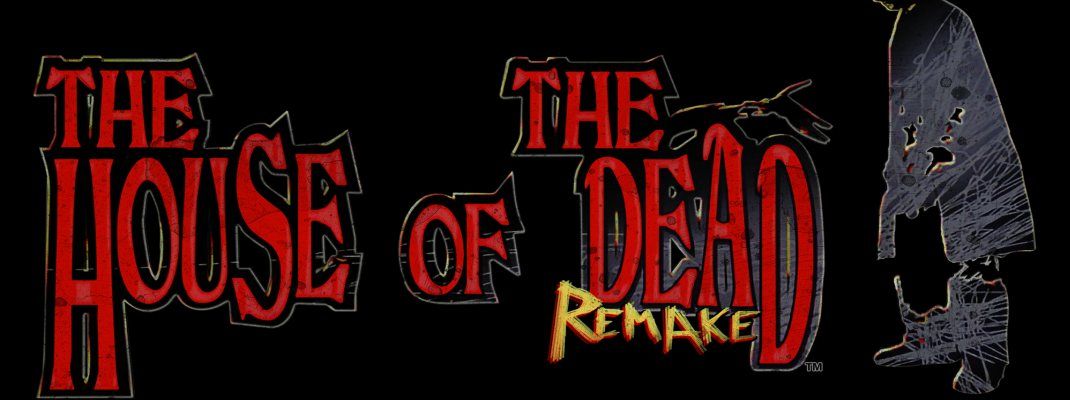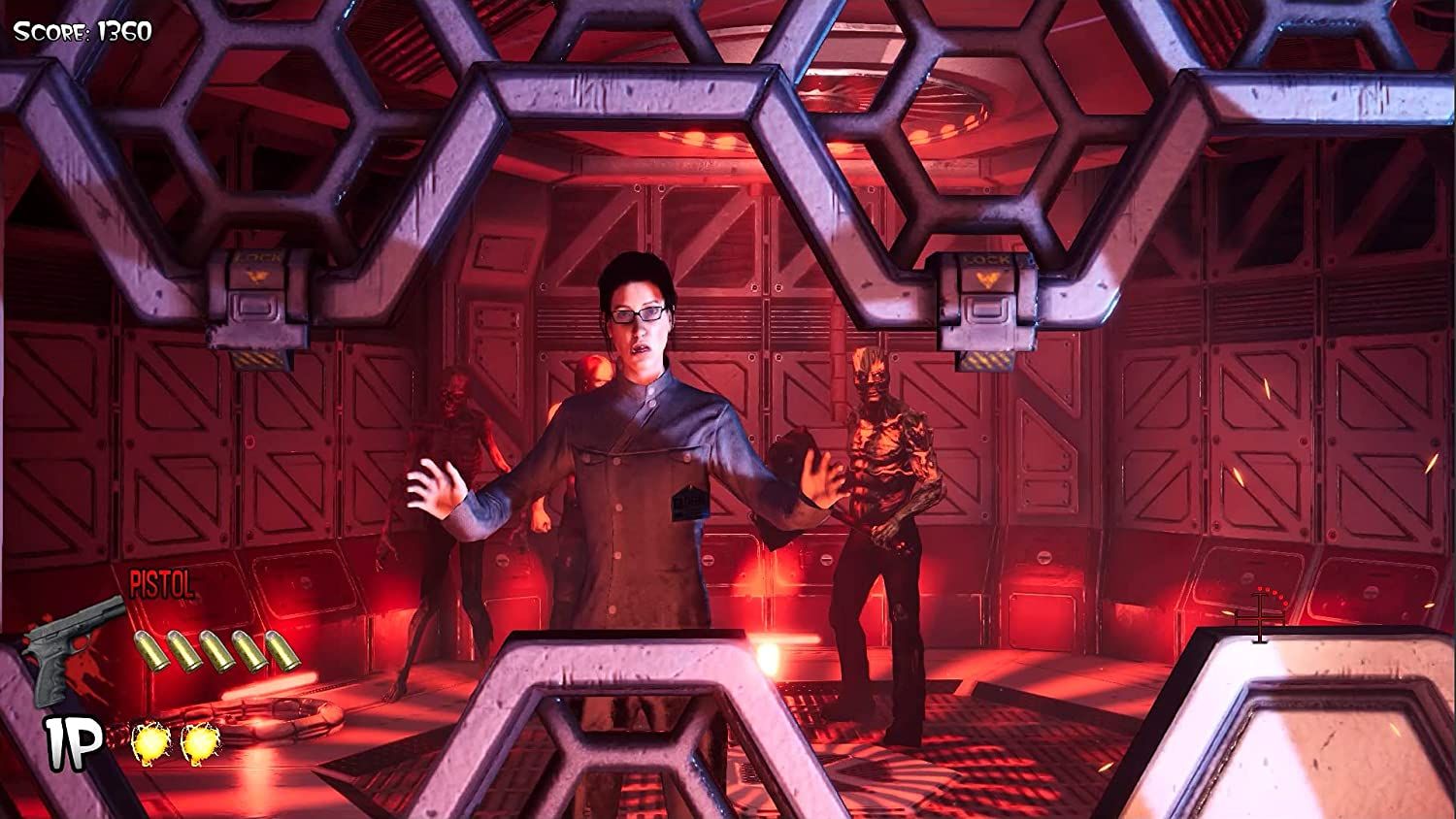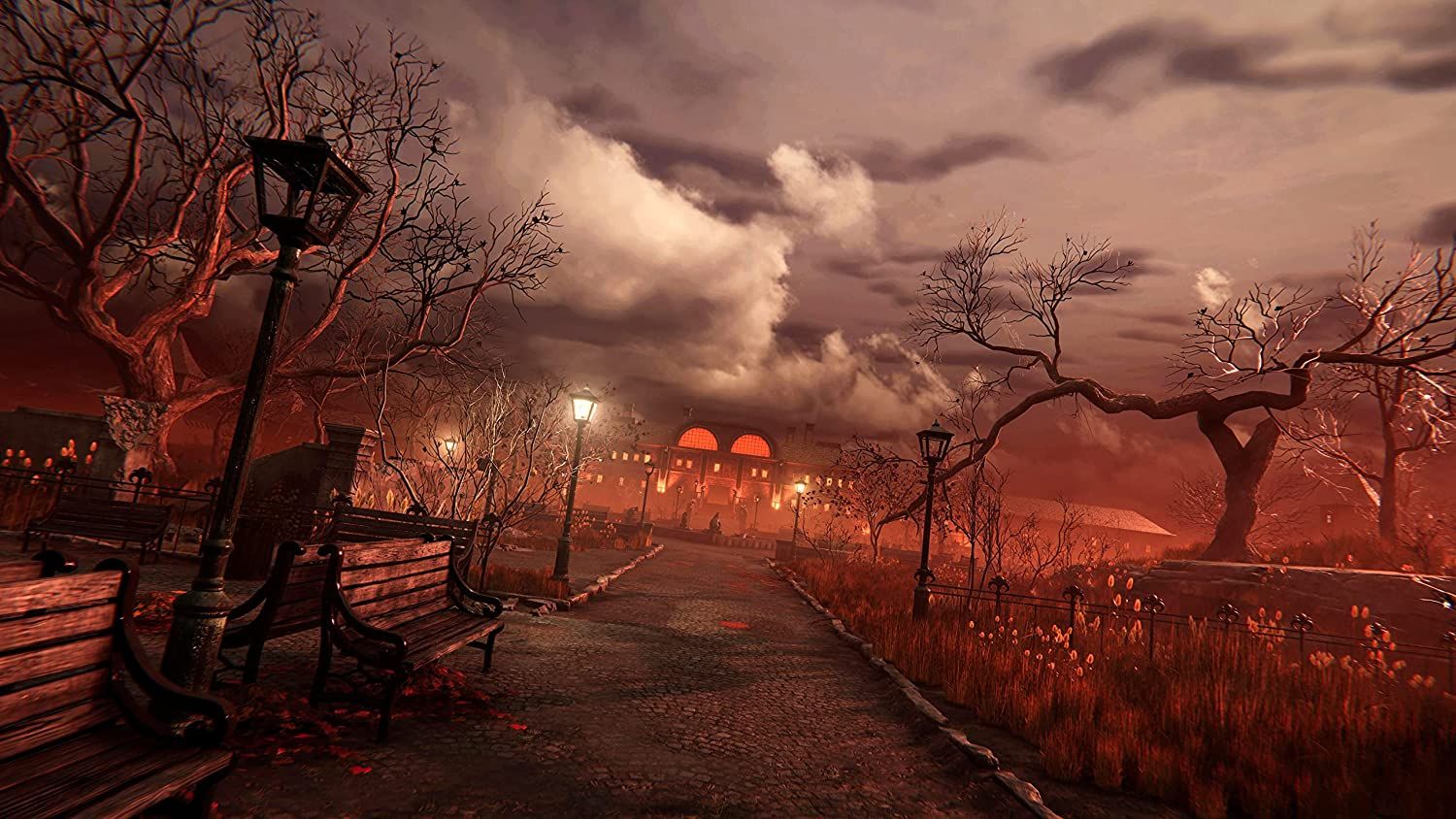Sega's The House of the Dead series began at an interesting time in their history. The company was still an arcade powerhouse thanks to racing games and Virtua Fighter, but hadn't done much with shooting gallery-style on-rail shooters beyond Virtua Cop. Horror-themed games were on the uptick thanks to Resident Evil, so they decided to essentially combine that kind of theme with a shooter and see what happened. The end result was a highly-regarded arcade hit that never got its just due on home consoles. The original got a Saturn release that lost out graphically compared to the arcade and that's it.
The first game didn't get a Dreamcast port alongside the sequel or even a stealth re-release alongside the third entry on Xbox like Panzer Dragoon Orta did where they included the original as a hidden extra. The 2020 remake of Panzer Dragoon showed there was still life in some of these unsung late-'90s Sega IPs, and after that got good marks, we saw The House of the Dead: Remake announced in 2021. The series has never had a bad entry and hasn't been seen on modern-day hardware since the PS3 days, where we saw a slew of HOTD releases.
Combining a game that felt a bit like a white whale for a re-release with newer hardware that seemed perfect to tackle the concept with the Switch was a natural move. Having the Joy-Cons offer a more accurate control setup than something like The House of the Dead Overkill's Wii Remote is great, although the lack of an official gun-style grip does hurt. The Switch has a lot of different rifle-style accessories out there for various light gun-style games like Chicken Range, but nothing quite like House of the Dead is on the platform in terms of sheer speed.
Some on-rails shooters on Switch have used a mix of stick controls, gyro controls and touch controls for portable play. In the case of the Model 2-esque Assault Chainguns KM, this approach worked well and touch controls as a whole are remarkably intuitive for a light gun game that requires fast action. A precision platformer doesn't work well without physical buttons, but having a touchscreen surface to work with enables easy headshots and emulates the effect of the accuracy of a light gun -- only with more speed. It's very much like playing a PC port of something like Area 51 where instead of light gun controls, it has mouse controls and a method that may seem unusual in execution actually works well in practice.
Unfortunately, The House of the Dead: Remake fails to deliver a top-notch control setup in any configuration. Playing it in portable mode results in being able to use left stick aim, gyro aiming or a combination of the two. There's no touchscreen shooting despite that being a valid way to play a game of this type on the Switch in portable mode and one that does approximate a light gun's accuracy better than anything else. As someone who played Lethal Enforcers on the Nomad with a d-pad and could do well in it, there are ways to make alternate input methods effective. Gyro aiming works nicely, but the small size of the reticule in both portable and docked mode hurts the experience and is crippling for portable playback.
There are no options to change the shade of red to be something bright, you can't make it larger, nor can you adjust any text size -- and with the bloody typeface used for the game, it's hard to read what the menus state in portable mode. It's a shame that more care wasn't taken with the UI and with the reticule because that alone would at least help and make the game more playable in every playback option. It's great to see a light gun game on the market that offers playback in every available Switch play mode, but the execution needs to be improved upon.
Gyro aiming with the Pro Controller is the best overall method of control and enables more accuracy when everything works perfectly. The problem with gyro aiming for a game like this is that it isn't fast enough to replicate the aiming needs of a game like this and the gyroscope has to be recalibrated often. Clicking the right stick allows you to recalibrate the reticule to the dead-center and that has to be done quite a bit. In the later game, it was actually easier to just recalibrate than try to deal with the small reticule since so many enemies come in as jump scares right in the center of the screen that doing it enabled more headshots and faster kills. Clicking the right stick allows you to recalibrate the reticule to the dead-center and that has to be done quite a bit. In the later game, it was actually easier to just recalibrate than try to deal with the small reticule since so many enemies come in as jump scares right in the center of the screen that doing it enabled more headshots and faster kills.
Using a rifle-style attachment for the Joy-Cons should in theory be a great way to control the game -- especially with gyro aiming having a variety of sliders -- but it doesn't work out as it should. Aiming never feels right even when just using a single Joy-Con on its own for aiming alongside a second Joy-Con for shooting and reloading. There's no control setup that feels natural and it's a shame since this is a fantastic game at its core, but when it doesn't control well, the experience feels off from beginning to end.
The control layouts are solid, with the left and right triggers acting as reload and shooting -- or the player can use B and A for those tasks. While the trigger usage is more natural, it does take slightly longer to press them than it does a face button -- so it's a slight tradeoff. The face buttons feel odd at first to use, but are quicker in response and given how this is a split-second reaction time game, that can matter.
Visually, the game looks very similar to Panzer Dragoon Remake with almost plastic-looking character models and muddy textures for the environment. The original arcade game had a dated look by today's standards, but was also razor-sharp in its visual presentation. This remake looks better in the sense that it has a higher polygon count, but doesn't look as good to the eyes as the original did in its day. It's hard to think of an era in which this final visual presentation would be good as even things like The House of the Dead Overkill on the PS3 look better overall and don't have such iffy-looking texture work throughout the world.
The sound design is thankfully outstanding across the board. The voice acting remains so bad it's good and the music is just the right mix of exciting and foreboding. It's a testament to the strong foundation of the original that over two decades later, it's held up this well. The effects work for the various guns is also nice and pops if you're playing with a nice home audio setup to make the impact of shots that much more impactful.
Closing Comments:
The House of the Dead: Remake had a lot working in its favor going in that didn't pan out in the end. The main problems lie in the controls, which never work as well as they should, at least at launch. It's entirely possible like with the Panzer Dragoon Remake that improvements make the post-launch experience better, but as it stands, it's hard to recommend this for serious light gun fans or those just looking to see what all the fuss was about in the genre 20-30 years ago. Playing the game varies from being fun when things work to being frustrating when they don't work well -- and that happens more than it should. It's not a great-looking game, but does sound great and will hopefully receive post-launch support to improve the experience overall.





